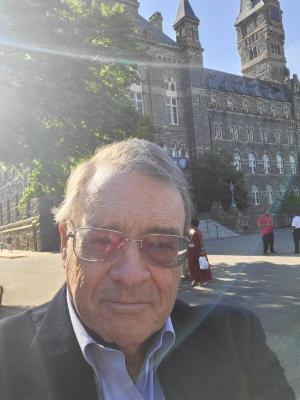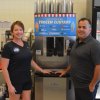Lewes MD presents at international medical conferences
Over the past several months, Lewes resident Roger H. Coletti, MD, FACC, FASNC, FSCAI, has presented his clinical research and outcome results at four international medical conferences.
These have included an international webinar on primary care and public health held in Dubai, where he presented virtually, and an invitation-only select symposium on Myofascial Pain, Fibromyalgia, and Fascial Pain Disorders in Padua, Italy, at which he presented in person.
He also made virtual presentations for an orthopedic conference in London and a physical medicine conference in London.
Ever since the publication of his paper titled “The Ischemic Model of Chronic Muscle Spasm,” Coletti has been asked to present at a different international conference almost weekly. That article was published in the European Journal of Translational Myology.
Last year he published a book titled “Chronic Muscle Spasm and Pain: Discoveries in the Etiology, Identification and Treatment of Chronic Muscle Spasm and Resultant Chronic Pain.”
He also published a second article, “Treatment of Chronic Muscle Spasm and Resulting Chronic Pain with the CMECD Procedure,” in the International Journal of Physical Medicine and Rehabilitation.
Retired from a practice in interventional cardiology, Coletti has had a long-standing interest in chronic muscle spasm and resultant chronic pain. He developed a procedure that he trademarked as CMECD, which is an acronym for “Coletti Method of Emg-guided Chemodenervation.” It was trademarked to assure that the method was carefully followed, but not patented as it is free to use.
Coletti has undertaken these presentations in order to inform the international medical community of the availability of this procedure to treat chronic pain resulting from chronic muscle spasm without the use of opioids or any other pain medications. He has treated several hundred patients with this procedure, resolving muscle spasm and pain from muscle spasms of over 30 different muscle groups. He presented data that reached statistical significance for success in pain relief and statistical significance that the length of time the individual had chronic muscle spasm and pain did not prevent a successful result in relief of pain, whether several months or several decades.
His research revealed that muscles in chronic spasm were kept in spasm from ongoing electrical activity resulting from chronic ischemia, that is, a self-limitation of blood supply. Essentially, the muscle spasm itself limits the blood supply and much like what happens in cardiac muscle, the lack of adequate blood supply generates an arrhythmia that maintains the muscle spasm, potentially indefinitely.
He discovered that an FDA-approved medication, phenoxybenzamine, that currently is seldom used, can be used off-label to knock out the muscle arrhythmia, known as spontaneous electrical activity, with a single injection. The SEA does not return, the muscle is able to finally relax, the pain is immediately resolved, and the muscle can gradually repair the damage from the long-standing spasm. Local tenderness may persist for several days up to a week, but neither the muscle spasm nor the pain will recur.
The procedure is carried out monitoring the SEA with a device called an EMG, which is essentially an EKG for muscle. The phenoxybenzamine mixture also contains a small amount of the mild steroid dexamethasone and the mixture can be obtained by any practicing physician from Millers Pharmacy, a New Jersey-based sterile-compounding pharmacy, and sent overnight. Lidocaine is added to that mixture at the point of use.
Coletti identified a phenomenon related to treatment of pain wherein treatment of the most severe pain makes the individual immediately aware of the second-most severe pain. His wife Kathleen coined the description of this as the “hierarchy of pain.” It became critically useful in assessment of pain relief following treatment.
Coletti intends to continue to present in person or virtually at future international conferences as his time and ability to travel allows in order to promulgate the use of the CMECD procedure in the hope of helping to resolve, in at least some small way, the current opioid crisis.
Any physicians interested in undertaking the procedure can find a wealth of information on his website, CMECD.info, or from his book, available wherever books are sold online. He is no longer in clinical practice, but physicians are welcome to contact him at RogerColetti@gmail.com to discuss putting the procedure into practice and/or to meet locally.















































